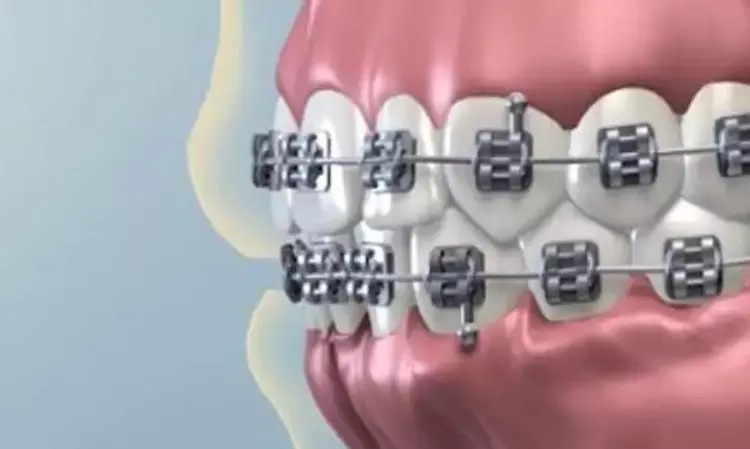- Home
- Medical news & Guidelines
- Anesthesiology
- Cardiology and CTVS
- Critical Care
- Dentistry
- Dermatology
- Diabetes and Endocrinology
- ENT
- Gastroenterology
- Medicine
- Nephrology
- Neurology
- Obstretics-Gynaecology
- Oncology
- Ophthalmology
- Orthopaedics
- Pediatrics-Neonatology
- Psychiatry
- Pulmonology
- Radiology
- Surgery
- Urology
- Laboratory Medicine
- Diet
- Nursing
- Paramedical
- Physiotherapy
- Health news
- Fact Check
- Bone Health Fact Check
- Brain Health Fact Check
- Cancer Related Fact Check
- Child Care Fact Check
- Dental and oral health fact check
- Diabetes and metabolic health fact check
- Diet and Nutrition Fact Check
- Eye and ENT Care Fact Check
- Fitness fact check
- Gut health fact check
- Heart health fact check
- Kidney health fact check
- Medical education fact check
- Men's health fact check
- Respiratory fact check
- Skin and hair care fact check
- Vaccine and Immunization fact check
- Women's health fact check
- AYUSH
- State News
- Andaman and Nicobar Islands
- Andhra Pradesh
- Arunachal Pradesh
- Assam
- Bihar
- Chandigarh
- Chattisgarh
- Dadra and Nagar Haveli
- Daman and Diu
- Delhi
- Goa
- Gujarat
- Haryana
- Himachal Pradesh
- Jammu & Kashmir
- Jharkhand
- Karnataka
- Kerala
- Ladakh
- Lakshadweep
- Madhya Pradesh
- Maharashtra
- Manipur
- Meghalaya
- Mizoram
- Nagaland
- Odisha
- Puducherry
- Punjab
- Rajasthan
- Sikkim
- Tamil Nadu
- Telangana
- Tripura
- Uttar Pradesh
- Uttrakhand
- West Bengal
- Medical Education
- Industry
Sandblasted crowns increase bond strength of orthodontic brackets, Finds study

Orthodontic bonding of brackets to teeth is a standard procedure to align teeth with fixed appliances. However, the bracket bonding to provisional crowns has always been speculated at every stage. A recent research conducted at the Department of Preventive Dental Sciences, College of Dentistry, Imam Abdulrahman Bin Faisal University, Dammam, Saudi Arabia has found out that under thermocycling conditions, sandblasting of provisional crowns increases the bond strength of orthodontic brackets.
The study is published in the International Journal of Dentistry.
The number of patients seeking orthodontic treatment has been consistently increasing. During orthodontic treatment, it is recommended to place the provisional restoration and to delay the final restoration until completion of orthodontic treatment. Recurrent bracket debonding necessitates orthodontists to prepare the bonding area with special measures.
Therefore, Suliman Y Shahin and associates carried out the study aimed to evaluate the effect of different grit sizes of diamond burs and sandblasting surface treatment on the shear bond strength of orthodontic brackets to provisional crowns.
A total of 75 discs were fabricated from a bisacrylic composite and divided into 5 groups (n = 15) according to surface treatment by black, blue, and green diamond burs and sandblasting in addition to a control group.
Metal orthodontic brackets were bonded to discs in a standardized conventional manner. All specimens were subjected to thermocycling with 5000 cycles of alternating 5°C and 55°C waterbaths. The shear bond strength test was performed using a universal testing machine.
A scanning electron microscope (SEM) was used to analyze the surface treatment effect and features of debonded surfaces. The amount of composite resin left on the specimen surfaces was analyzed and classified with the adhesive remnant index. One-way ANOVA was performed at α = 0.05.
The results showed that the shear bond strength of specimens treated with sandblasting was significantly higher than that of the control group under thermal aging conditions as well as blue burs, while no significant differences were found between different grit diamond burs and the controls.
As a result, the investigators concluded that "sandblasted provisional crowns would increase the bond strength of orthodontic brackets. Also, under thermocycling conditions, surface grinding of provisional crowns by super coarse diamond burs could increase the bond strength of brackets to tolerate limited orthodontic forces."
Dr. Nandita Mohan is a practicing pediatric dentist with more than 5 years of clinical work experience. Along with this, she is equally interested in keeping herself up to date about the latest developments in the field of medicine and dentistry which is the driving force for her to be in association with Medical Dialogues. She also has her name attached with many publications; both national and international. She has pursued her BDS from Rajiv Gandhi University of Health Sciences, Bangalore and later went to enter her dream specialty (MDS) in the Department of Pedodontics and Preventive Dentistry from Pt. B.D. Sharma University of Health Sciences. Through all the years of experience, her core interest in learning something new has never stopped. She can be contacted at editorial@medicaldialogues.in. Contact no. 011-43720751
Dr Kamal Kant Kohli-MBBS, DTCD- a chest specialist with more than 30 years of practice and a flair for writing clinical articles, Dr Kamal Kant Kohli joined Medical Dialogues as a Chief Editor of Medical News. Besides writing articles, as an editor, he proofreads and verifies all the medical content published on Medical Dialogues including those coming from journals, studies,medical conferences,guidelines etc. Email: drkohli@medicaldialogues.in. Contact no. 011-43720751


